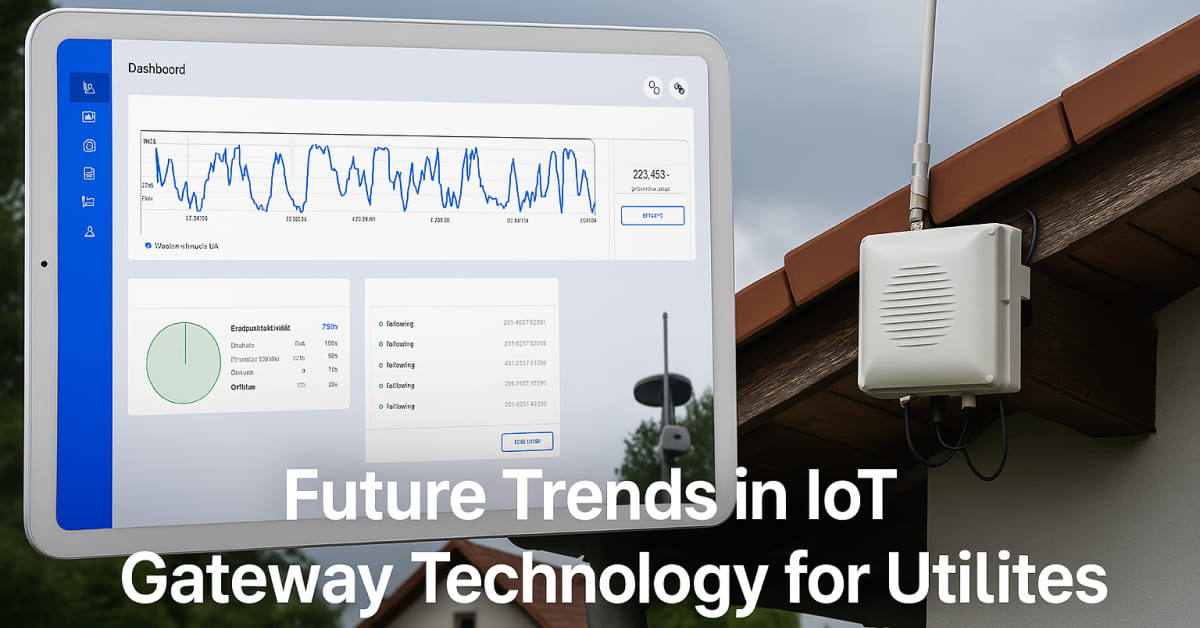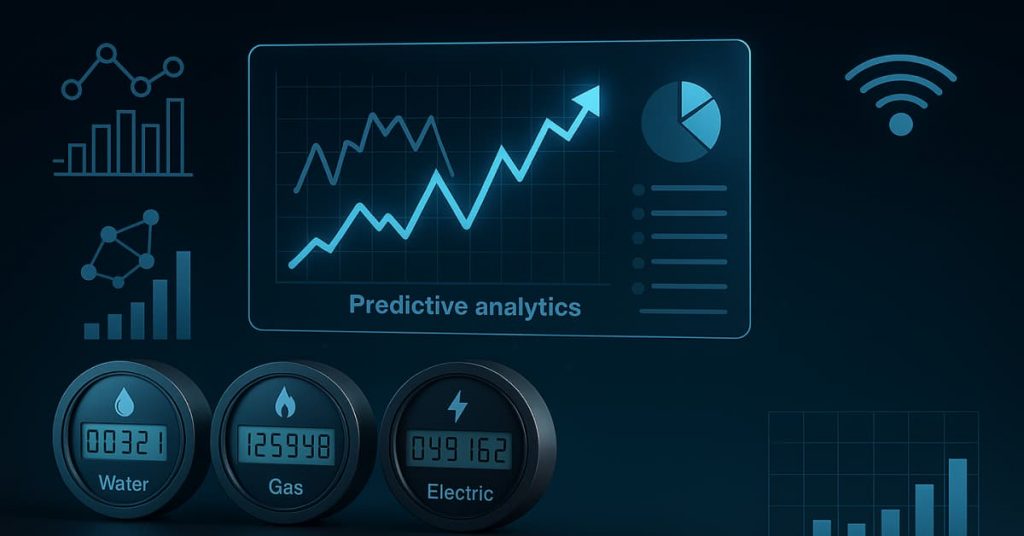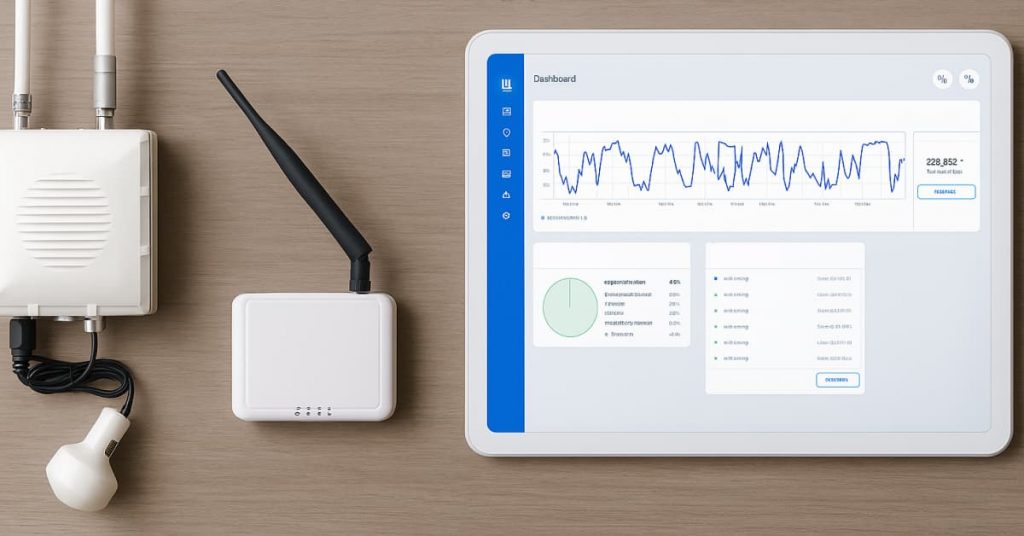
The utility sector is on the brink of a technological revolution, with IoT (Internet of Things) gateways playing a pivotal role in the transformation. As the demand for smarter, more efficient utility management grows, advancements in IoT gateway technology are paving the way for next-generation systems. This article explores the future trends in IoT gateways and their impact on energy, water, and utility management.
What Are the Future Trends in IoT Gateway Technology?
1. Edge Computing Integration
What It Means: IoT gateways are evolving to include edge computing capabilities, allowing data to be processed locally rather than relying solely on cloud systems.
Benefits:
Reduced latency for real-time decision-making.
Lower bandwidth usage and associated costs.
Enhanced data security by keeping sensitive information on-site.
2. Predictive Analytics and AI Integration
What It Means: Advanced IoT gateways will leverage AI and machine learning to analyze data and predict utility trends.
Benefits:
Early detection of equipment failures or inefficiencies.
Improved resource allocation and reduced waste.
Proactive maintenance schedules to minimize downtime.
3. Multi-Protocol Support
What It Means: Future IoT gateways will support multiple communication protocols, such as LoRaWAN, Zigbee, and 5G, enabling seamless connectivity across diverse devices.
Benefits:
Enhanced compatibility with a wide range of IoT sensors.
Simplified integration into existing utility networks.
4. Advanced Security Features
What It Means: IoT gateways will adopt stronger encryption, authentication protocols, and anomaly detection systems.
Benefits:
Protection against cyber threats targeting critical infrastructure.
Compliance with stringent data protection regulations.
5. Renewable Energy Integration
What It Means: IoT gateways will optimize the use of renewable energy sources by balancing grid demands and production.
Benefits:
Reduced reliance on fossil fuels.
Improved energy efficiency and sustainability.

How Will IoT Gateways Evolve for Smarter Utility Systems?
Scalability for Expanding Networks:
IoT gateways will support larger device networks as smart grids and utility systems grow.
Flexible architectures will enable easy upgrades to accommodate new technologies.
Enhanced Interoperability:
Gateways will act as universal connectors, bridging gaps between legacy systems and modern IoT devices.
This will streamline the transition to smarter utility systems.
Energy-Efficient Designs:
Future gateways will feature low-power consumption modes to align with green energy goals.
Solar-powered and battery-efficient models will become increasingly common.
Real-Time Data Visualization:
Dashboards integrated with IoT gateways will provide instant insights into utility performance and usage patterns.
This will empower managers to make informed decisions quickly.

Innovations in IoT Connectivity for Utility Monitoring
1. 5G and Beyond
Faster data transmission and ultra-low latency will enhance the performance of IoT gateways in high-demand environments.
Suitable for dense urban areas and large-scale industrial setups.
2. Mesh Networking
IoT gateways will adopt mesh networking to ensure uninterrupted communication across devices, even in challenging terrains.
Ideal for utilities spanning large geographical areas.
3. Cloud and Edge Hybrid Models
Combining cloud capabilities with local edge computing will optimize data storage, processing, and accessibility.
Top Upcoming IoT Gateways for Smart Homes and Businesses
1. Jooby Next-Gen Gateways
Features: Edge computing, AI integration, and multi-protocol support.
Applications: Ideal for both residential and commercial utility monitoring.
Explore: Jooby IoT Gateways
2. Industrial IoT Gateways
Features: Rugged design, 5G compatibility, and advanced security.
Applications: Suitable for industrial facilities and smart grids.
3. Renewable Energy Gateways
Features: Optimized for solar and wind energy integration.
Applications: Best for eco-conscious utilities and energy providers.
Why Future-Ready IoT Gateways Matter
1. Sustainability Goals
IoT gateways will play a crucial role in achieving carbon neutrality by enhancing energy efficiency and supporting renewables.
2. Cost Optimization
Advanced predictive analytics will reduce operational costs by minimizing downtime and optimizing resource usage.
3. Resilience and Adaptability
With improved security and scalability, future IoT gateways will ensure reliable operation even in rapidly changing environments.
Where to Buy Next-Generation IoT Gateways for Utilities
For cutting-edge IoT gateways designed for the future, visit:
Final Thoughts
The future of IoT gateway technology promises groundbreaking advancements that will transform utility management. From edge computing to AI-driven insights, these innovations will drive efficiency, sustainability, and smarter infrastructure.
Invest in Jooby’s future-ready IoT gateways to stay ahead in the evolving utility landscape.
